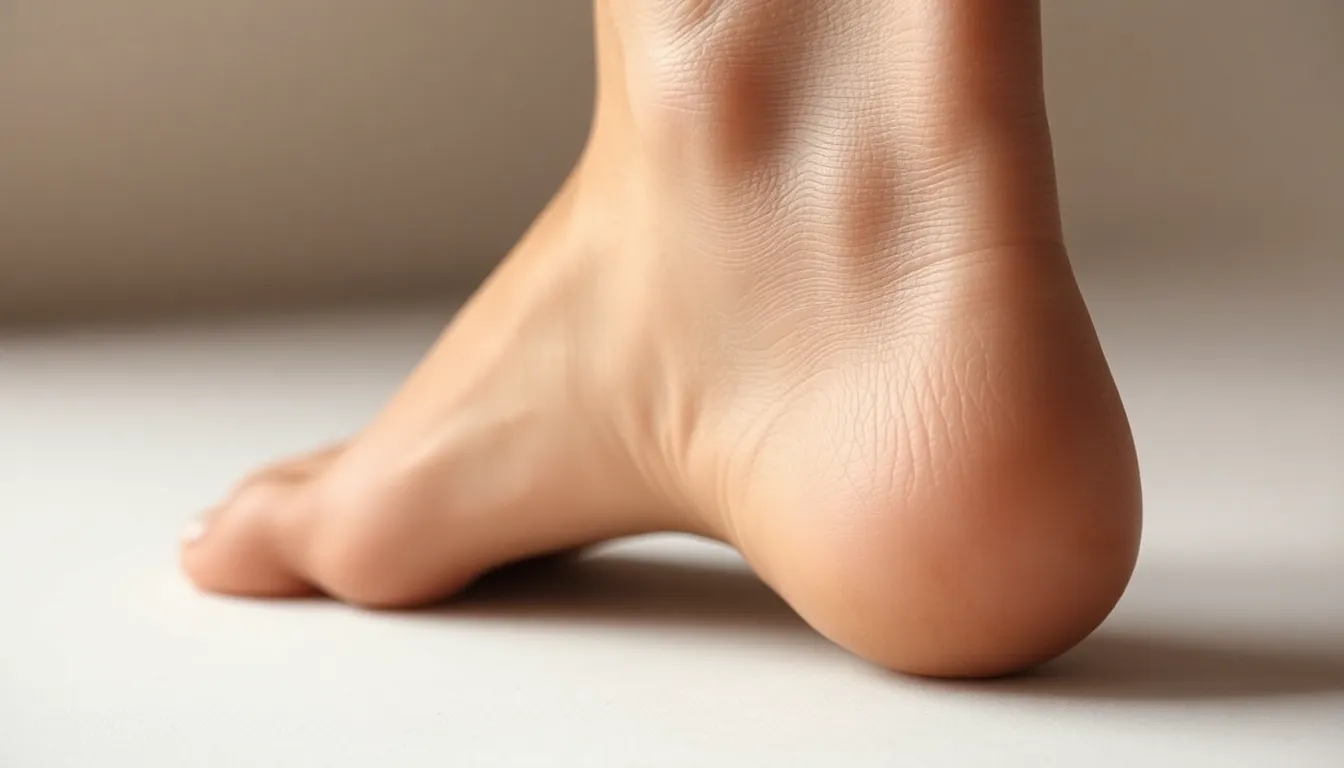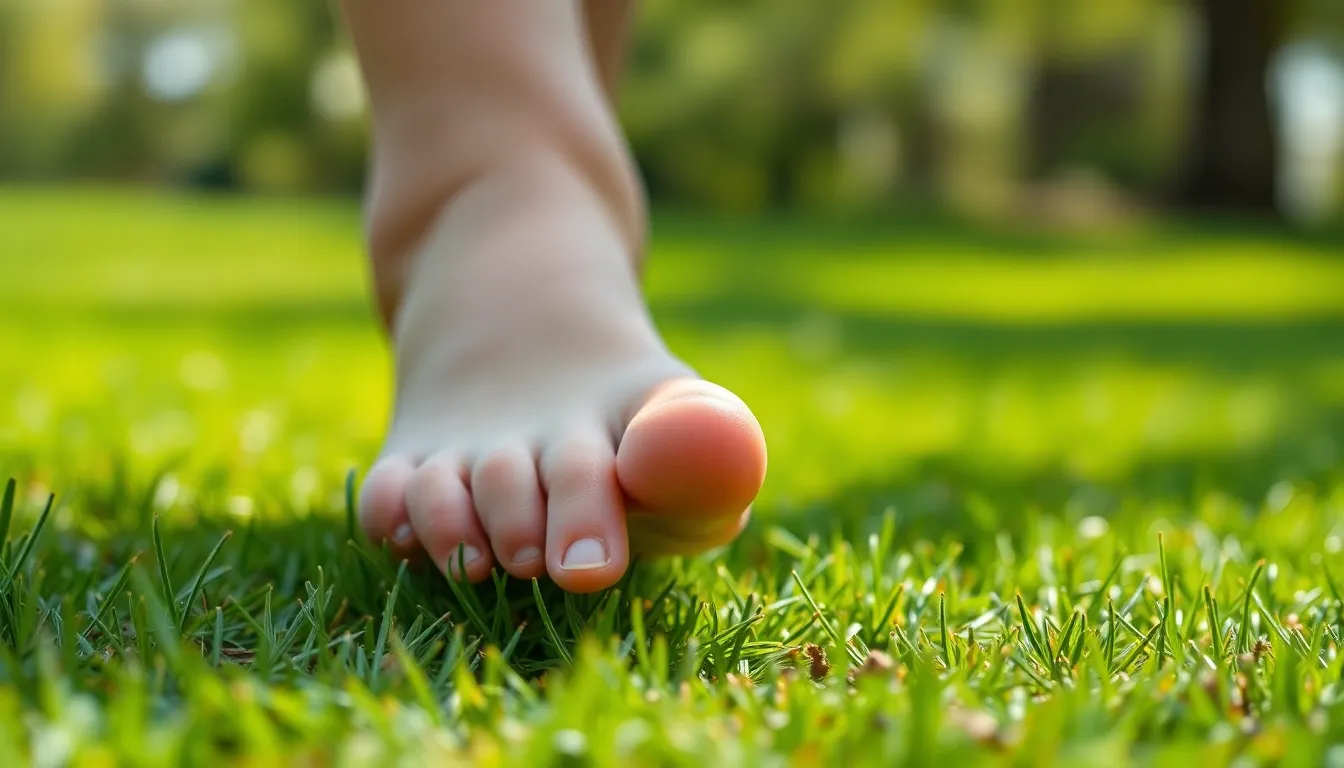Ever wondered why your feet seem to have their own personalities? Meet the ball of the foot—the unsung hero of your daily adventures. This little area, located just behind your toes, plays a crucial role in your balance and movement. It’s the part that helps you strut confidently down the street or leap gracefully over puddles, all while keeping your toes from staging a revolt.
But the ball of the foot isn’t just a cute name; it’s a powerhouse of functionality. Whether you’re a marathon runner or a couch potato, understanding this part of your foot can help you avoid discomfort and keep you on your toes—literally! So let’s dive into the fascinating world of the ball of the foot and discover why it deserves a standing ovation.
Table of Contents
ToggleWhat Is The Ball Of The Foot?
The ball of the foot is the padded area located just behind the toes. This part of the foot plays a crucial role in balance and mobility. Pressure from body weight concentrates at the ball during activities like walking or running. Consequently, it absorbs shock and helps propel the body forward.
Anatomically, the ball consists of the metatarsal bones and surrounding soft tissue. These structures work together to provide support and cushioning. In particular, the first metatarsal is essential for pushing off during movement. Other metatarsals follow suit, distributing weight evenly across the foot.
Pain or discomfort in this area can stem from various conditions. Common issues include metatarsalgia, a condition characterized by inflammation, and sesamoiditis, which affects small bones within the ball. Wearing improper footwear may also contribute to discomfort. Supportive shoes with adequate cushioning can alleviate pressure on the ball of the foot.
Physical activities like running and dancing place additional stress on the ball. Over time, too much impact may lead to injuries. Foot exercises, such as toe stretches and arch lifts, enhance strength and flexibility. Regular attention to foot health in this area promotes overall wellness and prevents injuries.
Understanding the importance of the ball aids in maintaining foot health. Awareness of proper footwear choices and foot care practices supports active lifestyles. Maintaining good foot health encourages confident movement and enhances quality of life.
Anatomy Of The Ball Of The Foot

The ball of the foot is composed of various structures that contribute to its functionality and support.
Major Structures Involved
Metatarsal bones form the foundation of the ball of the foot. There are five metatarsals, each connecting to a toe, with the first metatarsal being the most significant. This metatarsal supports the body’s weight during activities like walking and running. The phalanges, which are the toe bones, connect at the distal ends of the metatarsals, adding flexibility and mobility. The cushioning fat pad located beneath these bones provides shock absorption, essential for comfort during movement. Ligaments and joint capsules also contribute stability. Proper alignment and health of these structures are crucial for effective foot function and overall mobility.
Surrounding Muscles And Tendons
Multiple muscles and tendons surround the ball of the foot. Flexor hallucis brevis aids in bending the big toe, while others like the flexor digitorum brevis assist in toe flexion. Intrinsic muscles within the foot enhance stability and control. Plantar fascia, a thick connective tissue, supports the arch and absorbs shock with each step. Tendons, such as the tibialis posterior, play a vital role in foot mechanics, ensuring proper positioning and movement. Each of these components works in harmony to provide balance, strength, and flexibility, facilitating daily activities and athletic performance.
Functions Of The Ball Of The Foot
The ball of the foot plays a vital role in various movements by facilitating weight distribution and absorbing impact. Understanding its functions is essential for maintaining foot health.
Weight Distribution
Weight distribution occurs primarily through the five metatarsal bones that form the ball of the foot. The first metatarsal, being the strongest, carries most of the weight during activities like walking or running. Balance relies heavily on this area, allowing pressure to distribute evenly across the foot while standing or moving. Proper footwear can enhance weight distribution, preventing discomfort and injury. Footwear choices should emphasize support and cushioning to promote optimal weight transfer and reduce strain.
Shock Absorption
Shock absorption is a critical function of the ball of the foot. This area contains fat pads that cushion impacts when the foot strikes the ground. During running or jumping, these pads minimize stress on bones and joints, helping to prevent injuries. Muscles and tendons in the ball of the foot work together to enhance shock absorption, ensuring a smoother transition with each step. Supportive shoes that incorporate shock-absorbing materials further enhance this function, promoting comfort during physical activities. Emphasizing shock absorption contributes significantly to overall foot health and mobility.
Common Issues Related To The Ball Of The Foot
Several issues can arise concerning the ball of the foot, often leading to discomfort or pain. Understanding these conditions helps in managing symptoms and improving foot health.
Metatarsalgia
Metatarsalgia refers to pain and inflammation in the ball of the foot, typically affecting the metatarsal area. This condition often occurs from excessive pressure on the metatarsal bones, particularly during high-impact activities. Factors influencing metatarsalgia include inappropriate footwear, high-impact sports, and foot deformities. Symptoms manifest as sharp or aching pain, particularly during walking or standing. Ignoring metatarsalgia can lead to chronic pain and complications. Treatment options include rest, ice application, and the use of supportive shoes with cushioning. Custom orthotics provide additional support, redistributing pressure across the foot.
Neuromas
Neuromas frequently develop between the metatarsal heads, often resulting in pain and discomfort. A common type, Morton’s neuroma, affects the area between the third and fourth toes. Pressure causes nerve tissue enlargement, leading to a burning sensation or tingling. Individuals may also experience a feeling of having a pebble in their shoe. Tight shoes or high heels exacerbate this condition. Effective management includes choosing wider footwear, cushioning insoles, and avoiding activities that pressure the affected area. In some cases, corticosteroid injections may provide relief, while surgery is an option for persistent cases.
Treatment And Prevention
Proper treatment and prevention strategies enhance the health of the ball of the foot, ensuring pain-free movement. Effective methods focus on footwear choices and strengthening exercises.
Footwear Choices
Wearing supportive shoes significantly impacts comfort and injury prevention. Cushioning materials absorb shock, reducing pressure on the metatarsal bones. Proper fit remains crucial; shoes should have adequate width and support without cramping the toes. High heels and narrow shoes exacerbate discomfort; opting for footwear with a low heel helps maintain natural foot alignment. Custom orthotics are beneficial, as they provide tailored support for individual foot shapes. Regularly replacing worn-out shoes prevents additional stress on the foot. Evaluating footwear choices consistently leads to better foot health.
Strengthening Exercises
Engaging in foot strengthening exercises aids stability and flexibility. Simple activities like toe curls improve grip strength and support the metatarsals. Balancing on one foot enhances overall stability, targeting the muscles around the ball of the foot. Calf stretches prevent tightness and promote proper alignment during movement. Incorporating resistance bands into routines can also add variety and challenge. Consistency in practice strengthens foot muscles over time, reducing the risk of injuries and discomfort. Adopting these exercises cultivates long-lasting foot health and enhances overall mobility.
The ball of the foot is vital for maintaining balance and facilitating movement. Its unique structure allows for effective shock absorption and weight distribution during various activities. By prioritizing proper footwear and engaging in targeted exercises, individuals can significantly enhance the health and functionality of this essential foot area. Awareness of common issues like metatarsalgia and neuromas further empowers individuals to take proactive measures in preventing discomfort. Ultimately, understanding and caring for the ball of the foot contributes to improved mobility and an active lifestyle.



